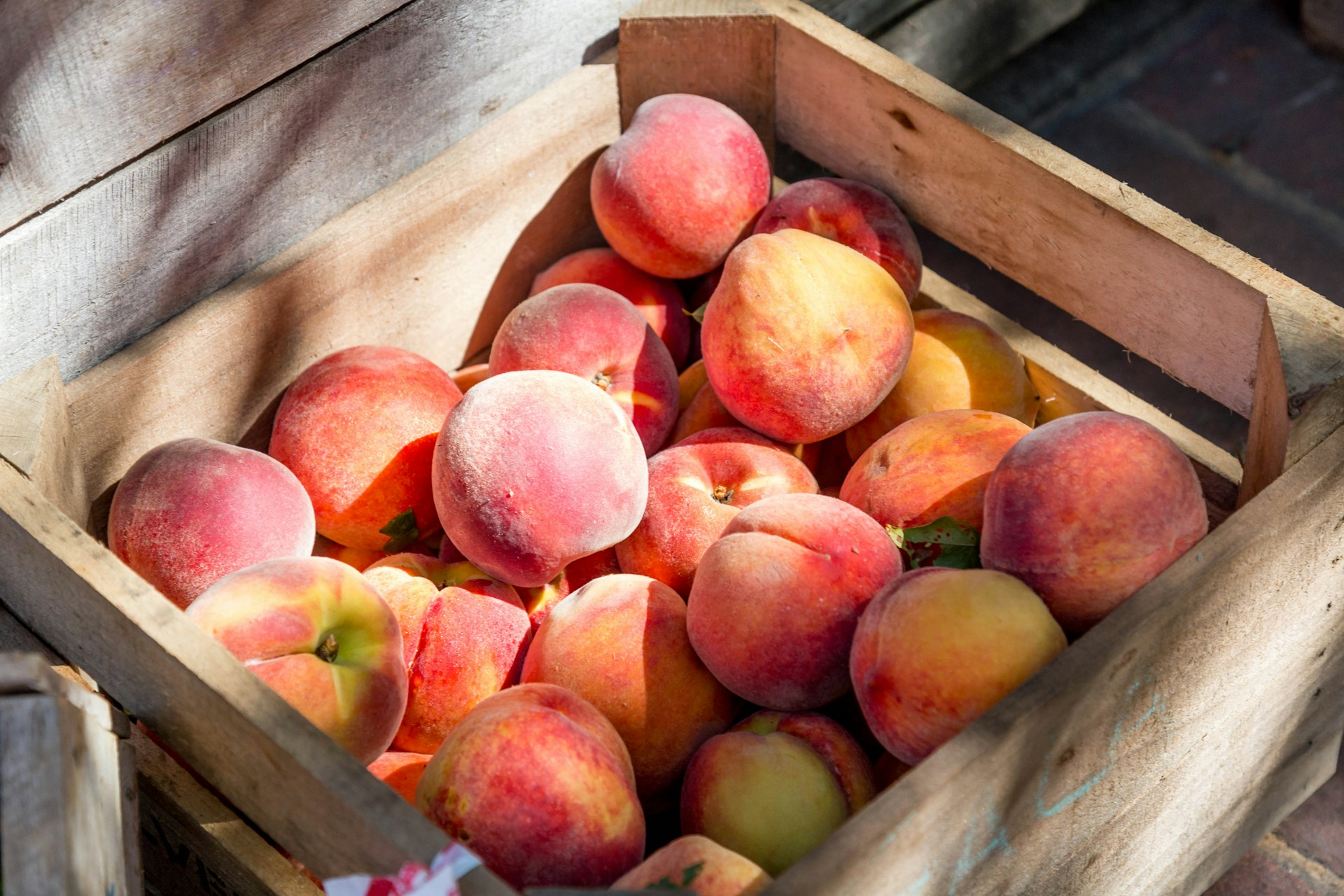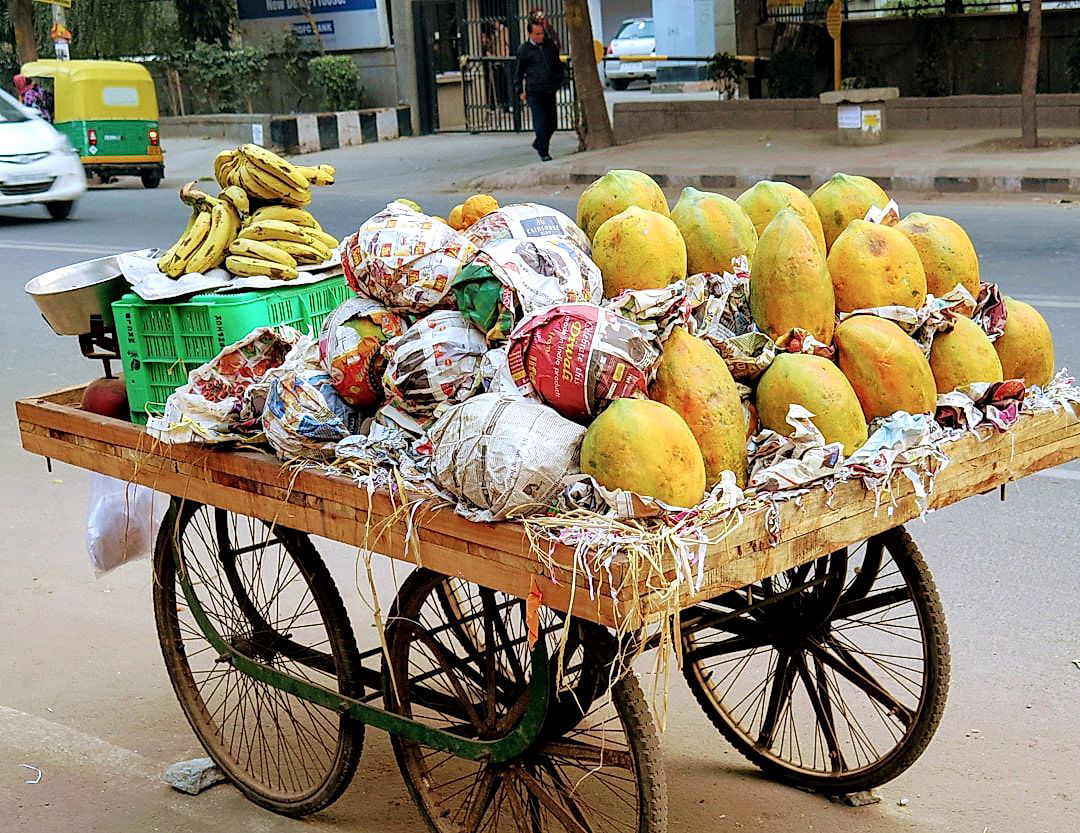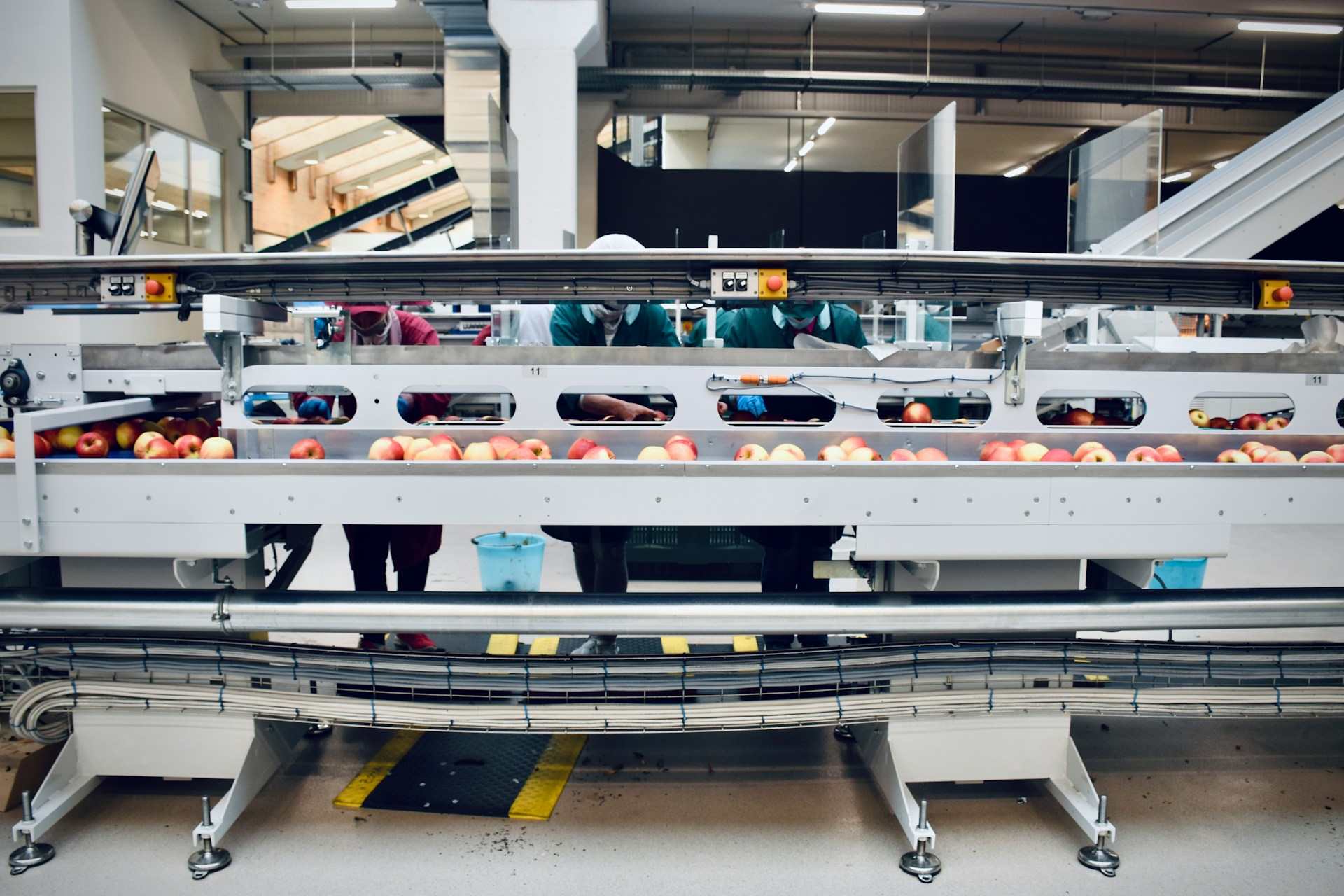Food safety in the agricultural industry has never been more critical.
As manufacturers, it is incumbent upon us to ensure the safe handling and packaging of our produce.
A mishandled step can lead to serious health repercussions for consumers, legal consequences for companies, and blemishes on reputations.
This article lays out comprehensive steps and procedures intended to uphold safety in produce packing.
From the receipt of raw materials to the distribution of final products, each phase of the operation needs meticulous attention.
These guidelines are intended to serve as a basis for maintaining high-quality standards in your packing process.
Contents
- Steps To A Safer Produce Packing Process
- 1. Conduct daily equipment and tools sanitization.
- 2. Enforce strict personal hygiene among staff.
- 3. Implement routine produce quality checks
- 4. Seal and Store Produce Properly
- 5. Monitor Temperature in Storage Areas
- 6. Address Detected Contamination Immediately
- 7. Regularly train staff on safety procedures
- The Bottom Line
Steps To A Safer Produce Packing Process
1. Conduct daily equipment and tools sanitization.
The initial step to ensuring a safer produce packing process is the regular sanitization of all equipment and tools used during the packing process.
One can’t overemphasize the importance of maintaining a clean and hygienic work environment, and this starts with your tools and equipment.
Contaminants can easily get transferred from dirty equipment and tools to the produce, thereby compromising the safety and quality of the packed produce.
Thus, conducting daily sanitization of tools and equipment is a vital step in reducing the risk of produce contamination during packing.
Sanitization processes usually involve the use of cleaning and antibacterial agents that can effectively kill germs, bacteria, and other harmful microorganisms that may be present on the surfaces of tools and equipment.
It is crucial to train staff well on the correct procedures for sanitizing equipment, to ensure that the sanitization is not just done regularly, but is also effective.
Furthermore, equipment and tools sanitization must be carried out at the beginning and end of each packing shift to minimize the possibility of bacterial growth in between uses.
Different types of equipment might require different sanitization methods. For instance, cutting tools may need a more rigorous sanitization process compared to storage bins or packing crates.
This means, in addition to regular cleaning, they need to be sanitized using chemicals that are harmless to the end consumer, but that can effectively kill disease-causing organisms.
Detailed records of all sanitization activities should be kept as part of the company’s quality assurance strategy.
These records not only provide evidence of adherence to recommended hygiene practices, but can also be vital in tracing back any contamination should the need arise.
When enforcing this sanitization practice, it is crucial to make sure the cleaning agents used do not leave any harmful residues that may in turn contaminate the produce.
The sanitization process should therefore be concluded with a thorough rinsing procedure to eliminate any chemical residues.
By making equipment and tools sanitization a daily routine, packing houses can significantly uphold the safety of their produce, protect consumers from foodborne illnesses, and consequently maintain a good business reputation.
2. Enforce strict personal hygiene among staff.
One of the largest contributing factors to contamination in the produce packing process is the lack of proper personal hygiene among personnel.
Staff members who are lax with their personal cleanliness can inadvertently become a source of microbial pathogens that can contaminate fresh produce.
When it comes to the safety of the produce packing process, enforcing strict personal hygiene among all staff should be a priority.
Starting with hand hygiene, it is essential that staff regularly wash their hands with the appropriate antimicrobial soap, and dry them properly before commencing with their tasks.
Hand sanitising stations should be easily accessible and highly visible in the packing area to encourage frequent usage.
The use of suitable personal protective equipment (PPE), can serve as an additional barrier to prevent pathogen transmission.
Gloves, for example, must be worn whenever staff are handling food, and these must be discarded and replaced immediately in the event of damage, or soiling.
Besides gloves, wearing clean and appropriate work attire, hairnets, and sometimes masks can help keep potential contaminants away from the produce.
Appropriate training needs to be provided to staff about how to properly wear, remove, clean, and store their PPE.
The adherence to these hygiene practices should not be optional but mandatory and monitored continuously.
Another critical aspect of personal hygiene in the produce packing process is the management of staff illnesses.
Staff members who are sick or displaying signs of illness should not be allowed to handle food, to prevent the risk of contamination.
Regular health checks may be rolled out to ensure all staff members are in optimum health and pose no risk to the safety of the produce.
Therefore, while the steps to enforce strict personal hygiene among staff might seem demanding, they are indeed necessary to ensure a safer produce packing process.
Such stringent measures would help to minimise the risk of foodborne illnesses resulting from the consumption of the packed produce.
Ultimately, strict personal hygiene practices among staff members are a significant defence mechanism in ensuring the safety and quality of packed produce.
Remember, a safer produce packing process leads to healthier produce, which in turn leads to healthier consumers.
3. Implement routine produce quality checks
Quality checks in the produce packing process serve a fundamental role in ensuring the safety and freshness of the products.
It pertains to the periodic assessment and examination of the fresh produce to guarantee its quality, cleanliness and its compliance with food safety standards.
Such quality checks should be undertaken at every stage – post-harvest, during sorting and grading, packaging, and storing the produce.
While designing a quality check routine, the first consideration should be the frequency of these checks.
These should not just be random checks, rather, these evaluations should be planned regularly and systematically.
A proper schedule, which points out exactly when and how these examinations are to be done, must be prepared and strictly adhered to.
Furthermore, checks should not only focus on the produce, but also encompass the inspection of the cleanliness of packaging materials, machinery, and tools used in the packing process.
For effective quality checks, the packing facilities should adopt standard procedures like visual inspections to identify any obvious defects, odors or discoloration.
Moreover, adopting advanced technology and tools can aid in carrying out more thorough and precise checks.
Tools like precision scales and moisture analyzers can give precise data, enabling better assessment of produce quality.
An efficient tracking and traceability system must be in place to identify and isolate any contaminated produce quickly, ensuring it does not reach consumers.
Quality checks aren’t solely the responsibility of a few staff members; the commitment towards these checks should be a part of the organization’s culture.
Training the staff, even those not directly involved in quality checks, about the importance and methods of these evaluations, strengthens the system further.
It’s also crucial that a system to document and record these checks is in place.
This documentation forms the proof of having undertaken these checks, and also helps in identifying any anomalies, trends, or improvements needed in the packing process.
Finally, these quality checks form the basis for continuous improvement – they provide inputs on where and what changes are required to enhance the produce quality and packing process.
4. Seal and Store Produce Properly
One of the critical steps to a safer produce packing process is ensuring that your products are sealed and stored properly.
Without proper sealing, fresh produce is open to various harmful elements that may contaminate the produce and make it unfit for consumption.
Sealing the produce properly in sanitary, airtight packages reduces the risk of contamination from bacteria and pests, and preserves the freshness of the fruits and vegetables.
Correct storage is simultaneously vital since it prevents the growth of harmful organisms on your produce and helps maintain its optimal quality.
Temperature control is a key aspect of proper storage, as some fruits and vegetables require specific temperature ranges to maintain their quality and safety.
For instance, cold-sensitive items such as bananas, tomatoes, and peppers should be stored at warmer temperatures, while apples, pears, and most leafy vegetables should be kept in colder environments.
Organizing the storage area strategically, where produce types requiring similar temperature and humidity conditions are grouped together, can maximize space utilization and minimize cross-contamination.
Moreover, providing ample circulation spaces around each stacked product ensures that no piece of produce is denied the appropriate temperature or humidity, which could otherwise lead to premature spoilage.
The use of correct packaging materials also plays a significant role in the safety of the stored produce.
Materials that are resistant to moisture are recommended, as they prevent the buildup of condensation, which can create an environment conducive to bacterial growth.
Furthermore, packaging should also be sturdy enough to prevent damage due to stacking and handling of the produce, ensuring that the protective seal is maintained.
It’s also advisable to regularly monitor and document the storage conditions.
This not only helps maintain optimal conditions but also aids in tracing potential problems back to their source, ensuring that further contamination can be prevented.
Hence, proper sealing and storing of the produce are not just about maintaining product quality, but also about ensuring the safety of the end consumers.
With these measures implemented in packing process, we are providing a safer, healthier product while also preventing financial losses due to spoiled or contaminated produce.
5. Monitor Temperature in Storage Areas
Within the produce packing process, monitoring the temperature in the storage areas is a crucial step towards ensuring safety.
Unstable temperatures can significantly affect the quality and safety of fresh produce.
Food-borne pathogens thrive in certain temperature ranges, which is what makes temperature control so integral.
For most fresh produce, a cool storage environment slows down the growth of harmful bacteria while preserving freshness.
Efficient storage temperature management results in less waste and reduced chances of foodborne illnesses resulting from consuming contaminated produce.
Investing in a quality temperature monitoring system is beneficial for several reasons.
This type of system provides real-time monitoring and sends alerts if the temperature fluctuates beyond the safe limits.
This allows for quick action to be taken, preventing potential spoilage and loss.
High temperatures can increase rot and encourage the proliferation of bacteria and other microorganisms.
On the other hand, overly cold temperatures can result in frost damage or the discoloration of certain fruits and vegetables.
Moreover, certain species of produce may require different storage temperatures for optimum preservation.
For instance, tropical fruits typically prefer warmer storage temperatures, while other fruits and vegatables, such as apples and potatoes, require cooler conditions.
It is also important to consider the humidity in the storage environment.
Like temperature, the right humidity level helps to prevent the dehydration of produce and maintain its quality.
Ultimately, consistently monitoring and maintaining the correct temperature and humidity in storage areas can contribute to a safer produce packing process.
6. Address Detected Contamination Immediately
The ability to swiftly and efficiently address detected contamination in the produce packing process is critical.
The sooner any contamination is addressed and controlled, the less damage it can do to the rest of the produce, the overall packing process and ultimately, your reputation as a provider of safe, fresh produce.
Immediately isolating the contaminated produce is the first step in this process.
Developing a system for identifying and tracing the source of the contamination is imperative for not only resolving the current issue but for preventing future contamination problems as well.
This requires both a combination of keen observation skills and thorough knowledge of the entire packing process.
Another key step in addressing detected contamination is evaluating the effectiveness of your current cleaning, sanitizing, and handling practices.
This process should prompt a review and possibly an update of your existing safety protocol.
Take into account the material used for packing, the freshness of the produce, and the various elements in the packing environment that could have contributed to the contamination.
Should a contamination incident occur, an internal investigation should commence to understand what contributed to the issue.
After containment and investigation, conduct a full decontamination of the packing area and equipment, even if they do not appear to be affected.
Full decontamination safeguards against the potential spread of the contaminant, providing added insurance to your packing process.
The final step of the process lies in communicating the incident and measures taken to all staff members and ensuring they understand the importance of such measures.
Transparency in communication reinforces the culture of safety and builds trust among your staff, fostering a team environment where everyone has a role in maintaining the safety of the produce packing process.
Debriefing sessions or simulation drills may be helpful in ensuring that all employees are well-versed with actions to be taken in such scenarios.
To conclude, addressing detected contamination immediately is a multi-step process that ranges from swift isolation of the affected produce, tracing the source of contamination, conducting an investigation, completing a full decontamination, and communicating transparently to everyone involved.
The prime objective is to ensure minimal disruption to the safety and efficiency of the productive packing process and to maintain the highest level of fresh, safe produce.
7. Regularly train staff on safety procedures
To ensure a safer produce packing process, all staff must be regularly trained on relevant safety procedures.
Regular training sessions serve as a reminder of the critical importance of safety measures, and keep all employees updated on new or revised procedures.
A team that is well-informed about safety can then apply their knowledge to their daily tasks, effectively and efficiently reducing potential risks in the packing process.
The type of training provided should be relevant to the specific roles of the staff. Individuals working in different areas of the packing process may require different safety knowledge and skills.
For instance, those handling the packing equipment need training on safe operation and emergency procedures, while those overseeing the storage areas must know how to control and monitor temperatures.
Indeed, training must be seen as an ongoing process, and not just a one-off activity to tick off the checklist.
Refresher courses help to reinforce previous safety training, further engraving these practices into the staff’s workflow.
Furthermore, safety training should be interactive and engaging, as employees are more likely to remember information that has been presented in an interesting way.
Different learning styles should be considered when designing the training – some staff may benefit from hands-on demonstrations, while others might prefer written guides or multimedia presentations.
It’s also worth investing in experienced, qualified trainers who can teach in a way that is easy for the staff to understand and put into practice.
Another key aspect of training involves teaching staff about the potential outcomes of not following safety procedures.
This is a powerful tool to show staff the importance of strict adherence to safety protocols in order to maintain a safe and hazard-free work environment.
Moreover, staff should be educated on how to promptly identify potential safety risks in the workplace and how to react accordingly.
A crucial part of safety training includes how to handle emergencies, as it’s essential that staff can react quickly and effectively in such situations.
Lastly, encouraging staff to ask questions during training sessions ensures that everyone thoroughly understands the safety procedures, thus contributing to a safer produce packing process.
The Bottom Line
In light of the steps detailed above, ensuring the safety and hygiene of food products it’s a complex procedure that involves meticulous oversight on every level.
From sanitizing the tools and equipment daily, enforcing stringent personal hygiene practices among staff to conducting frequent produce quality checks, each method plays a critical role.
It’s imperative to stress on proper sealing and storage of produce under appropriate temperatures for preserving freshness.
Immediate action upon the detection of any contamination is pivotal to prevent widespread issues.
Lastly, regular training to maintain and enhance safety procedures can not be ignored.
Therefore, an organization’s commitment to these steps will ensure they consistently deliver safe, high-quality food to their consumers.




